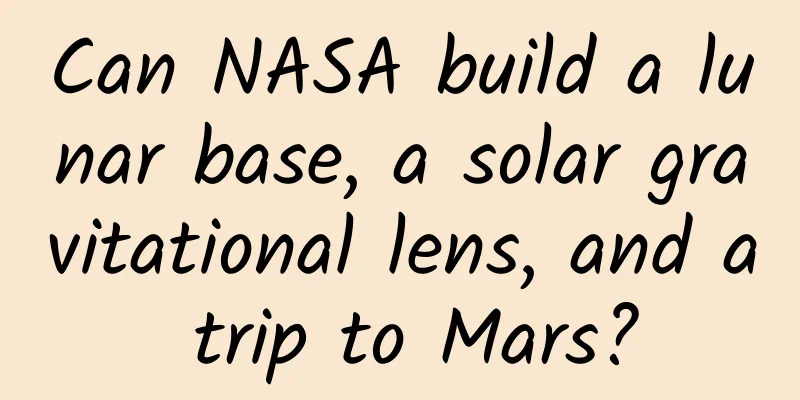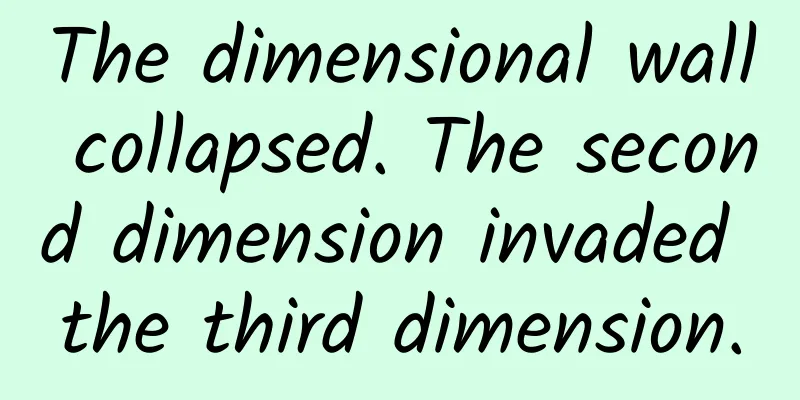Can NASA build a lunar base, a solar gravitational lens, and a trip to Mars?

|
The author or source of this article or its original publication: Bokeyuan official website: www.bokeyuan.net And mobile software: Bo Ke Yuan Future technologies that could enable faster trips to Mars and exploration of other distant bodies may start with NASA Innovative Advanced Concepts (NIAC). The program, which invests in early-stage technology ideas from researchers at NASA, industry and academia around the world, selected 23 potentially revolutionary concepts for a total of $7 million in prize money. Of those selected, 16 new concepts and seven studies have previously won at least one NIAC award. "NIAC is an innovative program that encourages researchers and the agency to think outside the box to find solutions to overcome challenges facing future science and exploration missions," said Walt Engelund, deputy associate administrator for programs in NASA's Space Technology Mission Directorate (STMD). "We are excited about the new concepts and seeing how the additional time and resources advance the studies selected for subsequent Phase II and Phase III studies." A mission concept to image an Earth-like planet outside our solar system was selected for Phase III study. Slava Turyshev, a researcher at NASA's Jet Propulsion Laboratory in Pasadena, California, will receive a $2 million grant to further mature the concept and related technologies. In Phase I and Phase II NIAC studies, Turyshev outlined the feasibility of solar gravity lenses to enhance observations of planets orbiting other stars, called exoplanets. A mission architecture was also developed using multiple small spacecraft and solar sail technology to propel them to their target destination 50 billion miles from Earth. The Sun as a gravitational lens This is only the third study selected for Phase 3 funding in the program's history, and NASA is excited about its potential to get us closer to imaging exoplanets in detail with resolution comparable to the famous Apollo 8 Earthrise photo. Selected Phase 1 and Phase 2 studies will explore the overall feasibility of a technology and develop it into a mission concept. Areas researchers will investigate include mapping asteroids and other small bodies in the solar system with hopping probes, manufacturing medicines on demand in space, and extracting water on the moon. Several of the concepts could inform capabilities associated with NASA's Artemis program, which aims to safely land the first woman and next man on the Moon in 2024 and establish a sustainable presence on and around the Moon by 2028. NASA selected the proposals through a peer review process that evaluated innovation and technical feasibility. All projects are still in the early stages of development, with most requiring a decade or more of technology maturation and are not official NASA missions. NIAC supports visionary research ideas by studying multiple stages of advancement. Phase I studies receive $125,000 for a nine-month effort. Eligible Phase I awardees may submit proposals for follow-on Phase II studies. Selected Phase II researchers will receive $500,000 for further research over a period of up to two years. Phase III is designed to strategically transform NIAC concepts to have the greatest potential impact for NASA, other government agencies, or commercial partners. Phase III researchers receive $2 million to develop and mature their mission concepts over a two-year period. NIAC is funded by STMD, which is responsible for developing new cross-cutting technologies and capabilities required for the agency to achieve current and future missions. Bo Ke Yuan | Research/Source: NASA BoKeYuan|Science, technology, research, popular science Follow [Bokeyuan] to see more beautiful cosmic science |
<<: How to deal with nosebleeds scientifically?
Recommend
A woman ate leftovers and had a high fever of 42℃, and she almost died. The culprit turned out to be this "refrigerator killer"
Recently, the news of #woman in Huangpu, Guangzho...
This inconspicuous country has produced the most outstanding group of people in the history of science
Among the winners of the 2023 Nobel Prize in Phys...
Did a 25-year-old boy develop a hemangioma from long-term nose picking? Don’t be afraid! But you really can’t pick your nose casually
In daily life, the nose sometimes produces reacti...
Aspartame is harmful to cardiovascular system, so we can no longer drink sugar-free beverages?
Studies have found that aspartame can damage the ...
How does Baijiahao make money? Teach you how to quickly become a regular account and start benefiting?
Everyone should know that with the rapid developm...
Who are the Chinese “old residents” on the far side of the moon?
Since the impact craters on the back side of the ...
Wedding Industry-Short Video Distribution Guide!
The wedding industry has always been an industry ...
Peipei's Dad "Pepei's Dad's Thinking Forum"
Peipei Dad's "Pepei Dad's Thinking F...
How to use the camera to shoot short videos on Tik Tok, teach you how to take blockbuster videos with your mobile phone!
Why can others create cool special effects even t...
Google will adjust the way app ratings are linked to specific markets and user devices
On August 24, Google announced on Monday local ti...
Second category e-commerce advertising!
Second-class e-commerce advertising : Tencent adv...
100-Hour Rule
[[157983]] You may have heard of the 10,000-hour ...
The General Administration has issued new regulations. Will there be any highlights in TV dramas in the future?
Since the implementation of the "Regulations...
Why is KFC’s social death event so popular?
KFC’s social death event is coming! In the past t...
Apple iOS 11 may no longer support 32-bit, and a large number of old apps may be invalidated
Apple's software store already has millions o...







![Meiyajia: Quickly and easily understand store operations [WeChat Enterprise Account Case]](/upload/images/67ebf28d46903.webp)

